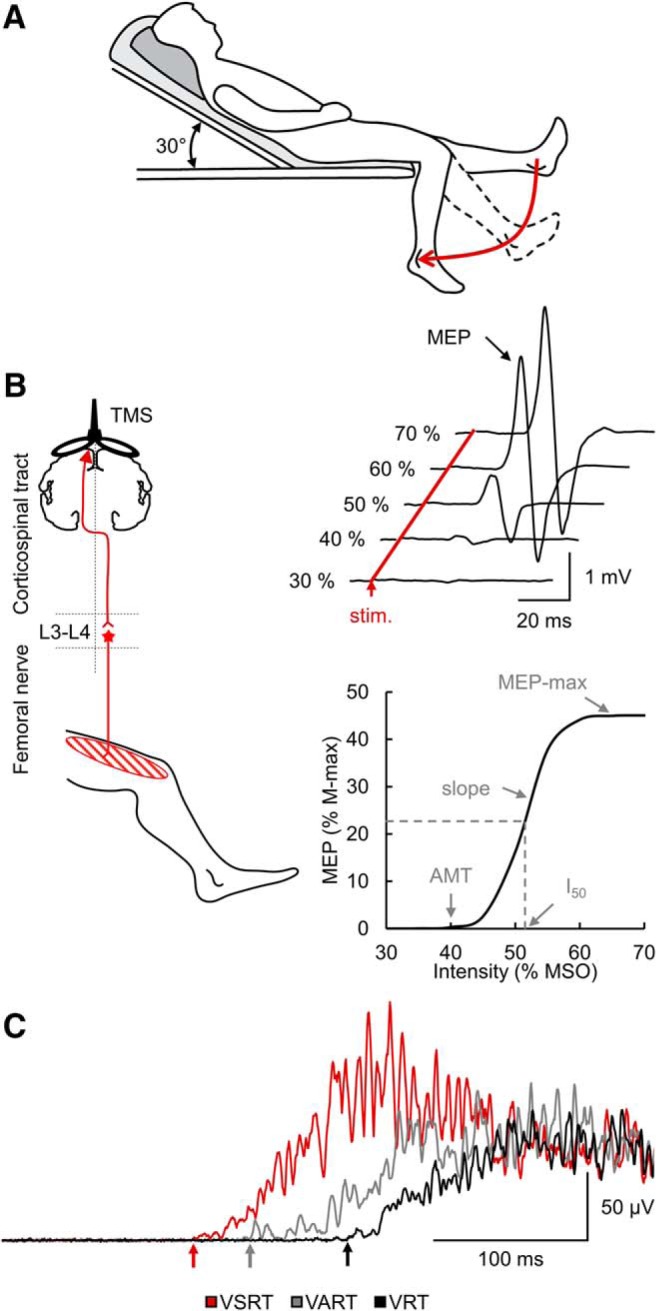Figure 1.

Experimental setup. A, The MAS measures resistance encountered during manual passive muscle stretching. During testing, subjects were lying in a semisupine position with the trunk at an angle of 30° of flexion. This neutral position helps to avoid increases in spasticity related to the stretching of the rectus femoris or the decrease of spasticity related to less stretched and more relaxed muscle. B, TMS was applied over the leg representation of the primary motor cortex to activate corticospinal neurons projecting directly or indirectly to quadriceps femoris motoneurons located around the third and fourth lumbar segment (L3–L4) to elicit an MEPs. MEP recruitment curves can be obtained by plotting the amplitude of the MEP against the TMS intensity and allow to define the MEP-max, I50, AMT, and the slope of the curve. C, During the StartReact response in some trials, an LED was presented with either a quiet acoustic stimulus or a startling acoustic stimulus (SAS). The StartReact response was measured between the VRT (defined as the time from cue to onset of the EMG burst in the quadriceps femoris after the LED presentation), the VART (defined as the time delay between the presentation of the quiet acoustic stimulus and the onset of the EMG response), and the VSRT (defined as the time between the SAS and the EMG onset).
